rectified tile and grout joints... am I asking too much?
I'm going with semi-polished, rectified 18"x18" porcelain. The tile sales rep warned me that few contractors will be willing to do a 1/16" grout joint, but she told me to stand my ground.
Sure enough, I'm gathering bids, and the first two contractors won't do a 1/16" joint. I told them the tile is rectified. One guy actually asked, "What do you mean by that?" Disturbing, no? I explained it. Five minutes later, he tried to explain to me that porcelain tiles are rarely exactly the same size or completely square. Once again, I explained what "rectified" means, wishing I could just snap my fingers and make him disappear.
Both of them have given me all the reasons why a 1/16" grout joint is impossible. My house is old, the floor can't possibly be completely level, a new subfloor won't fix anything, etc. The thing is, the current ceramic is at least 15 years old, and there's not a single crack, not even in the grout lines.
Am I asking the impossible? (Bill V., if you're reading this, your reco is on vacation -- I'm hoping he's my salvation!) Aesthetically, I love the look of a tiny grout line, especially with this sort of tile.
{{gwi:1549823}}
Comments (42)
floorman67
17 years agoI have never heard the term rectified tile and I have been a licensed and certified installation mechanic for 27 years, so no, it isn't disturbing at all ... I have heard the term, Dimensionally Stable Tile though.
two occurrances can prevent successful 1/16" grout joints.
one being nominal tile sizing (tiles not exactly the same dimension as every other tile), and two being the existing floors height variances that would cause a run-off.
When attempting to install a 1/16" grout joint with either present can cause tile stepping and run off becasue there is basically no joint to make it up in the installation grid system layed out prior to install.
TO answer your question, no, it is impossible.
However, the above considerations play an important role in it's success.
Since you house is older and admittedly not perfect, you want to research and find an installation professional comfortable with this, and expect to pay a handsome fee because basically they will be either installing a mud bed, or mudding the tiles in over a backer unit (a hybrid technique), which it time consuming and not a well known technique to every ceramic installer, especially those who only do thinset/backer board installations.
Many refuse to do it becasue of tile nominal sizing, extra time involved, the difficulty factors, and the lack of knowledge to pull it off successfully.
This doesnt mean they are bad installers.
On the contrary it means they care enough to admit they can't do it, so they refuse to do it.
and them some jsut do not know the difference and think it cant be done successfully, but still install great projects all the time.
I would keep searching until you find a installation mechanic who can do it.
The key is the tiles dimensions from tile to tile.
If they are the exact same with no variance, then it can be done.
bill_vincent
17 years agoI would not install rectified porcelain, even large format rectified porcelain, any other way than with a tight 1/16" joint. That said, there's atleast one installer in my area who, in every other way, is one of the best in the area, and he won't do it, either-- not even with 12x12 rectified porcelain or natural stone-- says it can't be done, in spite of the pics I've shown him of my work.
I agree with the salesperson-- don't give up. Stick to your guns.
Floorman-- the biggest way that rectified differs from other porcelain (or other tiles, for that matter) is that while all other tile, porcelain or otherwise, are stamped out to size before going into the kiln, rectified porcelain goes into the kiln in sheets, and then is cut to size afterward. If you ever see it, it'll have the same exact edge as polished stone tile, with the cutting ridges and the chamfered edge. This is why no matter what the size of the tile, it can be set tight, because the tolerances are alot stricter than they are for other tiles. You'll see less variation in size with rectified porcelain than you will even with polished stone.
Related Professionals
Hubert Flooring Contractors · Mahwah Flooring Contractors · Oswego Flooring Contractors · South Pasadena Flooring Contractors · South Plainfield Flooring Contractors · Elmwood Park Tile and Stone Contractors · Spartanburg Tile and Stone Contractors · Channelview General Contractors · Citrus Heights General Contractors · Florida City General Contractors · Mentor General Contractors · North Smithfield General Contractors · Wallington General Contractors · Warren General Contractors · Travilah General Contractorsgirlwithaspirin
Original Author17 years agoWhew. Thanks to both of you.
Part of me thought I was being silly. You know, what's a couple sixteenths of an inch? But the joints on my kitchen ceramic are 3/16", and on my honed limestone, they're 2/16" -- and there's a huge aesthetic difference between those two. The 1/16" grout lines I've seen with rectified tile absolutely make the look, in my opinion.
I'll stick to my guns. I think I need to shift my focus and make sure I'm calling in natural stone installers.
floorman67
17 years agoright bill .. but they call it Dimensionally Stable Tile out this way ... I just never heard it called rectified tile.
dickross
17 years agoI just had 1200 feet of 5" x 16" tile put in an old house with several minor cracks and a lot of humps and hollows in the slab floor. 1/16 grout lines with sanded grout. he used a lot of leveling compound, but it looks great.
jerry_t
17 years agoYour picture looks to be be around an 1/8" joint... a 1/16" is barely noticeable especially if you have a color matched grout color. I try to give the customer what they want if it will work.
bill_vincent
17 years agobut they call it Dimensionally Stable Tile out this way
I've got to remember that next time I go to a site looking for rectified porcelain, and a search comes up empty! :-)
nessas
17 years agoAny suggestions for tile brands that come in rectified porcelain, especially the large format sizes?
clg7067
17 years agoI've been looking at Daltile's "colorbody porcelian." The two styles I'm interested in are "Landscape" and "City View". Daltile recommends 1/16" grout lines for both and they both come in large format. There are probably more styles on the website that fit your criteria, but I was focusing on contemporary style.
Here is a link that might be useful: Daltile Colorbody Porcelian
catluvr
17 years agoDang! I knew it!! I think I mentioned this issue to you on another thread, GWA--I hope you're able to get someone to install it the way you want. I requested really thin grout lines and the tiler said the closest he could do was 1/8" (builder's sub--I couldn't get a different guy). I'm learning to live with it, but I still was after a much more unified look to my 12x12's.
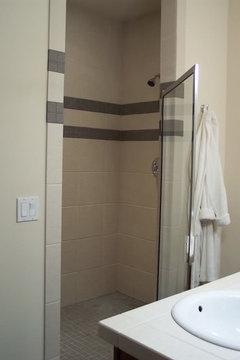
bill_vincent
17 years agocatluvr- not for nothin, but in that pic, it doesn't look like rectified porcelain. I see cushioned (slightly rounded) edges, and with rectified porcelain, the edge is square, except for a very small bevel (about 1/32"). With rectified porcelain, the tile looks exactly like natural stone tiles. If that's standard porcelain, then your installer did a helluva job in being able to use an 1/8" joint. That's tough to do.
catluvr
17 years agoThanks, Bill. I feel a little better about it when you put it that way. The builder said his tiler was really good, but I was a little disappointed when I saw I couldn't get a smaller grout line. My first pick WAS like you describe (the rectified)but was discontinued and what was installed was my 2nd choice. It does have a very slight curve on the upper edge (the countertop edge was beveled by the tile guy because there were no v-caps for that tile).
mahatmacat1
17 years agocatluvr, for non-rectified tile, that looks great. It's beautiful and simple and very clean.
gwa, I had to shop and shop to find my tile guy. I was so depressed over how long it was taking to find someone who was anywhere near as smart as the guys here that my daughter even wrote me a letter with a pretty picture, wishing that I find the right tile guy, and posted it on our mirror so I could look at it every day...
When I found The One, it was pretty clear from the beginning. The grout clouds parted, the tile angels sang, you know the drill ;) So don't give up, insist on someone you can communicate with and who knows how to do 1/16" grout lines. My guy even let me grind down the edges of my own tile to make them flat so I could do 1/16" grout lines with non-rectified tile. Other people laughed out loud when I suggested that. But this guy just made it happen. I had asked at the place I got the tile, which yielded at the best a very commercial guy who didn't have time for residential niceties...eventually, you know where I found him? Craigslist, of all places. He had an ad that said "not the lowest prices, but I get the job done right". He does a lot of commercial, but also some residential, and was just starting out on his own business after years of working or someone else who did mostly commercial, so he was eager to have good references for residential as well. He still wasn't Bill or mongo, but hey who is...So there are some tips from my LONG search... The motto of my school was "I will find a way or make one" and that's the *one* thing I liked about that place :)
(from how some of those girls approached life, I always thought it should have been "I will find a way or marry one" but that would be catty, wouldn't it...;) [it's late!])
garycook
17 years agoRectfied porcelain is close to natural stone very realistic
if installed correctly.I used Laufen Basillica in my two baths floor to ceiling and am pleased.Use the tightest grout lines possible.{{gwi:1549825}}
{{gwi:1549826}}
verysleepy
17 years agoHi there. We will be using Porcelanosa 12/24 inch rectified tile in out tiny bathroom and also have a vertical foot of accent glass tiles in the bathtub running up the wall. Hopefully our contractor will know how to install each. ahahhahaha.
Porcelanosa makes some beautiful big rectified tiles.
bill_vincent
17 years agoPorcelanosa is known for their large format tiles, both porcelain and conventional ceramic. It's a good tile, for sure. :-)
leetikes
17 years agoI am also choosing rectified porcelain tiles, but in a 12"x24" format. The tile setter that was originally lined up is unable to do it now. So, I am getting the flooring company to supply and install the tiles.
The sales person told me that the mim. grout they can do is only 3/16" (that how the spacer comes in). If they do the grout any skinnier, they cannot get the "grout down" evenly. This would cause grout failure/cracks in grout. So, his recommendation is 3/16" or no grout at all.
I read in another thread (on wall tiles) and Bill did not recommend no grout at all. I have seen 1/16" rectified tiles all over. The consultant at the tile company basically said that there is no point in going with the rectified tiles if I am not getting a 1/16" grout.
So, is there a special grout mix for 1/16" grout install? Are there also special skills required for the 1/16" grout install? I just need to convince the flooring people that it is OK to do a 1/16" grout for the rectified tiles. If there is special skills involved, I also want to know that their installation team has experience with 1/16" grout.
Thanks.dmlove
17 years agoThere is a special "grout mix" for 1/16" grout lines -- you use unsanded grout, whereas for anything 1/8" or larger, you use sanded grout.
I used rectified tile in my bathroom (all over) and the tiler did use 1/16" lines on all the walls, using unsanded grout. It looks fantastic. I failed to specify that I wanted tiny lines on the floor, too, and he did wider lines, using sanded grout. Fortunately, it still looks really good, just not how I would have done it had I remembered to specify.
pharaoh
17 years agoWe installed our 16" travertine tiles (1000 sq ft of it) ourselves with 1/16" grout line. The job is not perfect, and there is lippage but for DIY i am pretty happy. The MOST important thing was to have the smallest grout line possible.
otherwise we would have missed the modern look that we were going for. Larger grout lines tend to look more country or rustic. the monolithic look is more modern...just my opinion :)
leetikes
17 years agoWhen I pursued this further, I was told the following.
"We can do a 1/16 grout line. It will have to be in unsanded grout which is a wall tile grout and not designed for foot traffic. Also there will be minimum penetration in the space between the tiles. We will not be able to guarantee that the grout will not walk through or break out."
Are rectified tiles with 1/16" grout unsuitable for floor application then? Has anyone installed rectified floor tile with 1/16" grout with favourable results?
Thanks.bill_vincent
17 years agoThe sales person told me that the mim. grout they can do is only 3/16" (that how the spacer comes in).
That's all I'd have to hear, and I'd be out the door. These people are morons, as backed up by their followup statement-- "We can do a 1/16 grout line. It will have to be in unsanded grout which is a wall tile grout and not designed for foot traffic. Also there will be minimum penetration in the space between the tiles. We will not be able to guarantee that the grout will not walk through or break out."
This moron has no idea of what they're talking about, or how to install tile. NOT IDEA AT ALL.
Seriously-- Go somewhere else, or you'll be the next person posting a horror story. Please trust me on this.
Nevermind FOOT traffic. I've done 18x18 rectified porcelain in car showroom floors with 1/16" grout joints and unsanded grout. It stands up to CAR traffic!!
If it were me, I'd have told the person to go back to asking if their customer wanted large fries with that!!
leetikes
17 years agoThanks to the advice from members of this forum, I insisted on the 1/16" grout for my rectified tiles. The tiles are now down and grouted, and they look good. The grout guy suggested that I seal the grout line myself. The tiles are mostly in bathroom applications and unsanded grout is used. Do I need to seal the grout lines and what product should I look for? Thanks.
bill_vincent
17 years agoIt wouldn't hurt to seal them. The best, most available products would be Aquamix's Sealers choice 15, or Miracle's 511 Impregnator.
floorman67
16 years agosaudoso,
1. a true tile craftsman does not use spacers. They installs to their grid system (chaulk lines). This is much more accurate if laid out properly.
2. 1/16" isnt always possible depending on the tile (even with spacers).
3. tiles squareness and tile size accuracy from tile to tile is what determines the mminimum grout joint size.
4. rectified tile and dimensionally stable tile are guaranteed to be able to have ultra thin 1/16" joints,. but be prepared to pay considerably for that.
saudoso
16 years agoThanks for the info, floorman.
The tile was rectified, and I had specifically asked for 1/16th based on my conversations with the tile sales people. The problem really was that the contractor never allowed for the possibility (even if had been at higher cost) and went ahead and did it with 1/8th without further discussion.
It's good to know that spacers aren't really used. If a chaulk lines are used, does that mean you get any size grout you want? The contractor claims it was 1/8, but measuring with tape it looks like a 1/4.
I'm happy to be sorting this out for a few years down the line, when I do my bathroom with similar tiles, I'll know to stand my ground or look for a different contractor who will at least discuss the option of 1/16th.
floorguy
16 years agoIf the tiles have a beveled edge, it is very possible to get a full grout joint. Making an 1/8 that is actually between tiles, pack wider then an 1/8. I hope I drew a clear enough picture.
floorman67
16 years agoyes, by gridding out the installation area with chaulked grid lines, you can set any joint width you desire, however, as floorguy states, beveled edge tile makes the minimum VISIBLE joint side wider than the actual joint size from tile to tile because of the space the bevel takes up.
before you snap a grid system though, yo want to dry lay a few tiles out to form a square with the desired joint size to get the overall block size for the grid system.
here is an illustration of what i mean by a tiling grid system. I wrote this up for another poster some time ago about a diagonal installation, but it shows a grid system pretty well.
{{gwi:1527216}}
the red lines are the main control lines.
the pink lines are also main control lines but figured off of the red lines to make the instalaltion a diagonal.
the dark blue lines are the actual installation grid the tiles are set to.
the light blue/aqua lines represent the tile joints.
as you can see, a tile chaulked line grid system provides for exact tile spacing, facillitates squareness of the entire installation, and facillitates evening up the cuts and ensuring the isntallation stays on track throughout the entire area, no matter where the isntallers starts it, becasue you set the tiles to each individual grid and respective installed tile. This also makes cuts a breeze to do all at once before the field install, during the field install, or after the fields install.This isnt as simple as it looks and sounds. You have to ensure every lines is respectively squareness or true perpendiculars to opposing lines. An easy way to check for squareness of the installation grid is by measuring the blocks corner to corner. If they are exact then you are square, if not them something is out of whack and needs adjusted.
floorman67
16 years agohere is another illustration representing a tile grid system square to the walls and the formula used to ensure squareness of the perpendicular control lines the grid block lines are measured off of (Pythagorean+Theorem using Pythaorean Triples
floorman67
16 years agoin case you were wondering how to figure out those grid block sizes, here is another illustration for it.
if each tile is EXACLTY 12"x12", we want a 1/16" grout joint, and we want our grid to be 3 tiles by 3 tiles, our grid size would be 3 foot 3/16". Please note that on two sides we add an extra joint, else we would be joint crushed when we install! We do this so we have a grout joint against the last installed tile (on starter rows we remove that extra joint becasue it is a tile to tile measurements and we arent installing against any other tiles, but this can be replaced with a cut row/block to make it easier if needed).
ignore the 3/16" shown on the illustration ... it was for another thread.
ddfv888_aol_com
15 years agoI'm stunned at the ignorance displayed in this forum.
I've been installing ceramic/stone/porcelain, as a private
contractor for over 25 years (i.e. since there were only 4x4, nominal of course, tiles available on walls and only porcelain mosaics or kiln baked ceramics for floors. You know, the ones with the knobs on the bottom side. Think I know what I'm talking about? I am recognized as a superior installer in Bergen County NJ as evidenced by staying in business for over 25 years and never spent a nickel on advertising. I work 6 and sometimes 7 long days a week at a moderately competitive price all by word of mouth. Anyway, on the subject of rectified tiles and how wonderful Porcelanosa tiles are. I very recently installed 500 plus square feet of rectified tiles of which the dimensions were 26 inches by 17.5 inches. BTW no one in this forum has mentioned a tile of that size yet. The degree of difficulty is extreme at that size. I was also asked to space the tile BUTT, not even 1/16 inch joint over an extremely well poured and "flat" slab of concrete.The area to be tiled has a straight run of over 60 feet long by 9 feet wide in a printing factory. Even though I am a very careful and conscientious worker I was given a D minus on the job and was not paid. I might even get sued.The
bottom line is, if the floor is PERFECTLY FLAT (which NO floor is : repeat NO floor)you will still get a degree of lippage, no matter how minimal it is. Which leads the the almighty question of how tolerant the homeowner or building owner is when they look at your job. People in this forum have used the word good job. No one has said great job. Job quality is in the eye of the beholder, but rest assured no one can EVER expect a perfect install, with rectified tile. Go to any Porcelanosa showroom or for that matter, anywhere in the continental United States and examine the sample installations for yourself. Learn what to expect before you get your hopes too high. Going from a 1/16 joint to a 1/8 joint will greatly increase your satisfaction. Don.t be fooled by someone who says he can do what YOU want to make him do. We are all trying to make a living. In ending I would love some feedback from anyone who claims to put in a perfect floor (rectified w/1/16 joint, and I am willing to travel anywhere to see this work.llblasi
13 years agoYou are not asking to much at all! My home has just under 1,200 sq' of 20" rectified porcelain tile with 1/16 grout lines. It has been in place for 11 years, and in that time we have not had a cracked tile or separation in a grout line. That is saying a lot considering the number earthquakes we have had in SoCal.
We have been so delighted with this tile and the way it was floated and set that we are in the process of searching for a company with installers capable of replicating this installation.
Samantha111
12 years agoI've never heard of rectified tiles before and am still not clear on what I'd be looking at. Except for the usual high gloss marble "real stone tiles" that I've looked at don't have perfectly squared clean cut edges. I even seem to recall often seeing a bevel on the polished marble. Stone floor tiles often have the more rustic irregular chiseled edge and uses wider joints. I have never been made aware all this firing stuff needed to be worried about when choosing a tile.
Regarding 1/16" grout lines, there has been an update discussed here recently that I will link to for a more up to date reference:
Here is a link that might be useful: new TCNA recommendations on grout widths for large format rectified tiles
tommyguy
8 years agoWe chose a 36" long format rectified wood grain tile in an area over 3000 sq ft. Like the comments here, our tile professional said (even on our concrete condo floor that was professionally leveled) a 1/16" grout joint was not possible. So we did their recommended 3/16" With a superior grout match, there is not a big issue. However, in the largest single area, the installers removed enough grout during the grouting process that there is now a small visible white line on the side of the tile at the grout seams (rectifying means that the edges are cut off to make them straight so that the top of the tile is totally flat without the rounded off edge of non rectified tile, so the entire side is the color of the base tile, white). It drives me nuts. When the sun shines on the floor, all I see is this white lines in this area. Is there any way I can dye the grout and the white line to make it go away? I don't want to have to dig all the grout out, but I'm fearful that if I were to have it grouted again over the top that it would be too thin to stick. ANY ADVICE WOULD BE APPRECIATED!!
floorguy
8 years agoRectified tiles are the same size and usually cut to make them precise. Calibrated tiles are usually kiln fired tiles and from the molds, can be 1/8" bigger or smaller than the advertized sizing. But usually 1/16 at the greatest. This makes smaller grout lines not visibly feasible. A wide grout line will hide the size variation. The rule is the actual grout size picked is to be 3x's the size variation. A 1/16th variation, means a 3/16ths grout joint minimum.
chiflipper
8 years agoVery late to the party here. Twenty + years ago Crossville offered what they called "Crosscut" for a whopping upcharge. This was their standard porcelain tile that was precisely cut after firing which would allow for a 1/16th grout line which was the hook for the upcharge. I can now afford the porcelain tile I want BUT, Crossville now sells only rectified porcelain and suggests a 1/8th grout line. SO...wtf?
telluwhat
8 years agolast modified: 8 years agotelluwhat, I likes me some crossvile crosscolors!
1/8" is perhaps an opt out of any wrrty concerns when you the INSTALLER break the rules and please youre client with A 1/16"LOL Installer error.
are you sure its not just some specific crossvile material with abnormal amounts of some expandable recycled content?
rectified should be able to set at 1/16 unless its an expansion concern inherant to that material.
Guinevere
8 years agoAgree with 'telluwhat'...1/8" grout line is an opt-out because (1) expansion is a problem due to climate/exterior vs. interior, (2) opt-out because installer cannot/will not take responsibility for the task - as it does take a well qualified installer (craftsman) to do a premium job. Secondly, being this thread is now 10 years old, I believe Rectified Tile is a common term. Simple definition: Rectified Tile: 'laser cut' to as perfect as the laser can be/is calibrated. As far as a 1/6" grout line, I had it installed with zero problems (beveled 24" x 24" tiles), by an installer who 'cared' about the quality of his work (important). I tend to be quite particular regarding quality of craftsmanship, and have found the one/two man contractors do the best job (care about their reputation and are much less expensive), as opposed to a company with big ads and a fleet of vans who sub-contract work to the lowest bidder.
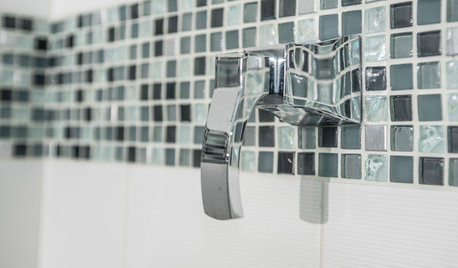
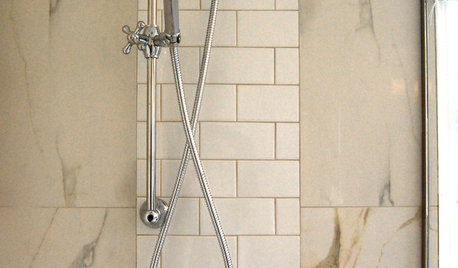






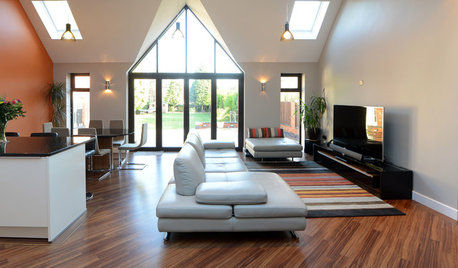








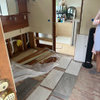
saudoso